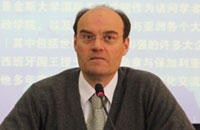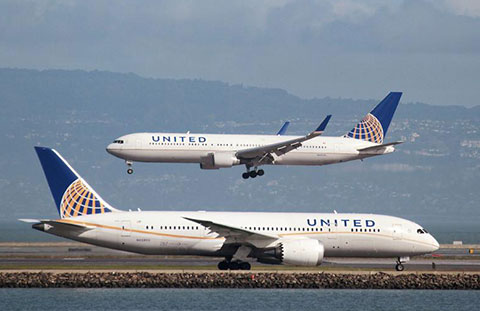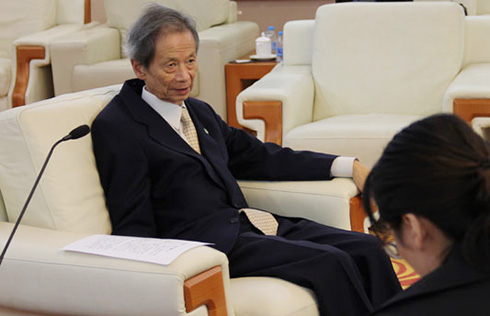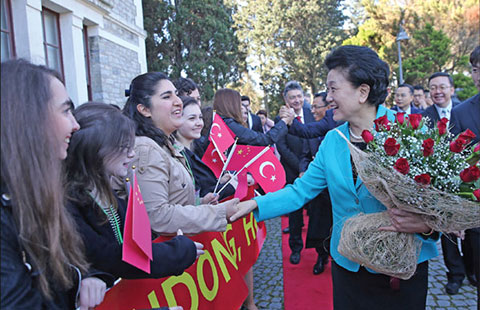The Korean nuclear issue: Past, present, and future – A Chinese perspective
Another important international event occurred in 2011that is worth mentioning. In February, the Arab Spring spread to Libya, with people taking to the streets against Moammar Gadhafi. The demonstrations soon evolved into civil strife. On March 17, the U.N. Security Council passed Resolution 1973, which authorized the creation of a no-fly zone over Libya. On March 19, France, Britain, the U.S., and other countries started to con- duct air strikes in Libya, which had already given up weapons of mass destruction in 2003. On October 20, Gadhafi fell into the hands of the opposition in Sirte and died in a tragic manner. When speaking to the public for the last time, Gadhafi mentioned that Kim Jong-il must have been looking at him and laughing. Indeed, the DPRK kept a close eye on the situation in Libya. An article published in Rodong Sinmun on April 18 said, "In recent years, the tragedies of some countries which renounced the nuclear program half way under the U.S. pressure have clearly confirmed the sensible and correct choice North Korea has made. …Only by doing so can the national and ethnic autonomy be safeguarded."
Although concerned and wary following the events and aftermath of the Libyan uprising and the Arab Spring, which might have had an impact on its considerations about pursuing the nuclear path, North Korea did not totally give up dialogue. Kim Jong-il remained committed to the "unconditional resumption of the Six-Party Talks" until his death on December 17, 2011. He was succeeded by his youngest son, Kim Jong-un, who initially continued the policy adopted by his father.
North Korea and the U.S. held a third round of high-level talks in Beijing on February 23-24, 2012, as the Six-Party Talks were yet to be restarted. The two sides reaffirmed their commitment to fulfilling the September 19 Joint Statement, stating that the Korean Armistice Agreement was the cornerstone of peace and stability on the Korean Peninsula prior to the signing of a peace accord. They also agreed to simultaneously take confidence-building measures to improve DPRK-U.S. relations.
Subsequently, they separately released the February 29 Agreement (or "Leap Day Agreement").
Although the documents were not identical, there were elements reflecting a basic consensus. Among the key points were: the DPRK should suspend nuclear tests and long-range missile tests as well as uranium enrichment activities, and allow the IAEA to verify and supervise its activities; and the U.S. should not be hostile to the DPRK and should be willing to improve relations and expand exchanges. The U.S. also promised to provide North Korea with 240,000 tons of nutritious food.
Over the coming weeks and months, the two sides made many claims and counterclaims. The essential dispute was whether the agreement included the launching of satellites. North Korea argued that the moratorium on long-range missile tests did not include the launching of satellites. But the U.S. insisted that launching satellites was included. Unfortunately, what exactly was agreed to on this matter remains unclear.
On the morning of April 13, 2012, North Korea launched its first application satellite, Kwangmy?ngs?ng-3, and the U.S. government decided to not deliver food aid as previously agreed. On May 2, the U.N. Security Council's North Korea Sanctions Committee updated the sanctions list, adding three North Korean entities. On May 13, the fifth session of the 12th Supreme People's Meeting of the DPRK amended the country's constitution, declaring in its preface, "Comrade Kim Jong-il has established our motherland as an invincible political and ideological power, a nuclear nation and an unrivaled military power."
On June 18, President Obama accused North Korea of being a continuous threat to the U.S. and declared an extension of sanctions against Pyongyang for another year. On December 12, North Korea announced the successful launch of a second Kwangmy?ngs?ng-3 satellite, which was widely believed to be a Taepodong-2 missile. On February 12, 2013, North Korea conducted its third nuclear test. On March 7, the U.N. Security Council unanimously passed Resolution 2094, condemning North Korea's third nuclear test and issuing a new round of sanctions. On April 2, the spokesperson for North Korea's Atomic Energy Agency said that the Yongbyon 5-mega- watt graphite-moderated reactor, which had been closed and sealed in 2007, would be restarted.
In 2014, after the U.S. and South Korea started the "Key Resolve" joint military exercises on February 24, North Korea repeatedly launched various types of missiles.
On May 20, 2015, North Korea issued a statement, claiming that it has achieved a miniaturized and diversified "nuclear strike capability."

























